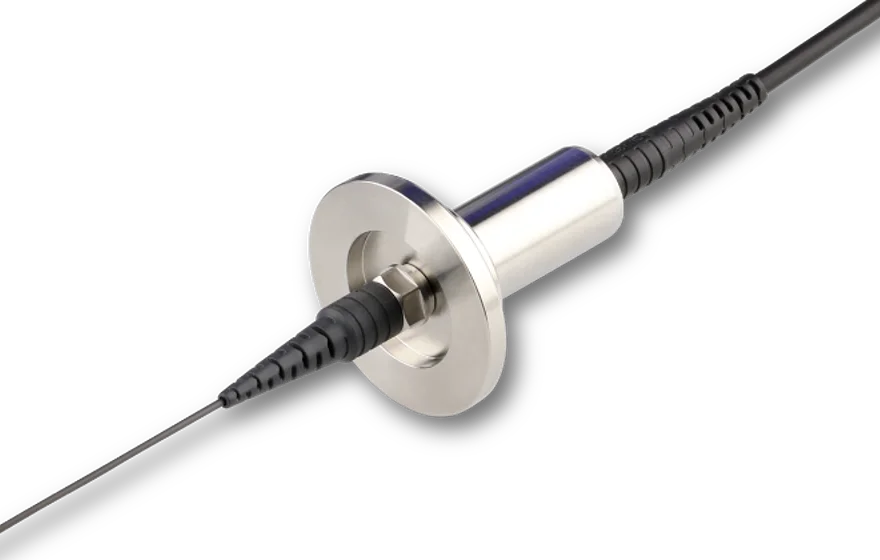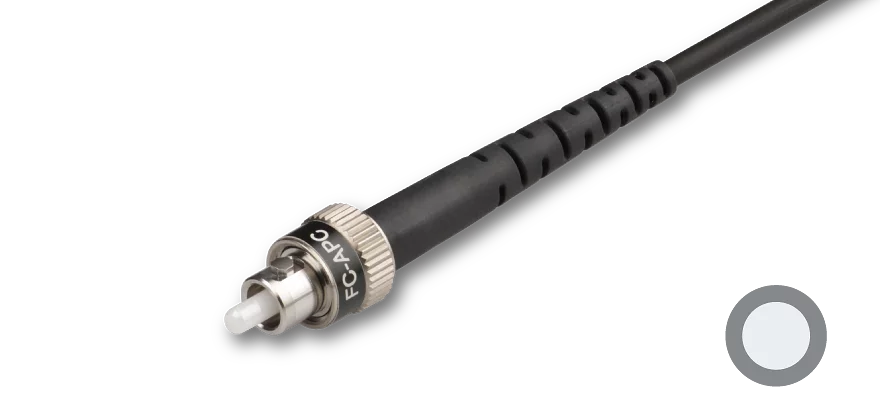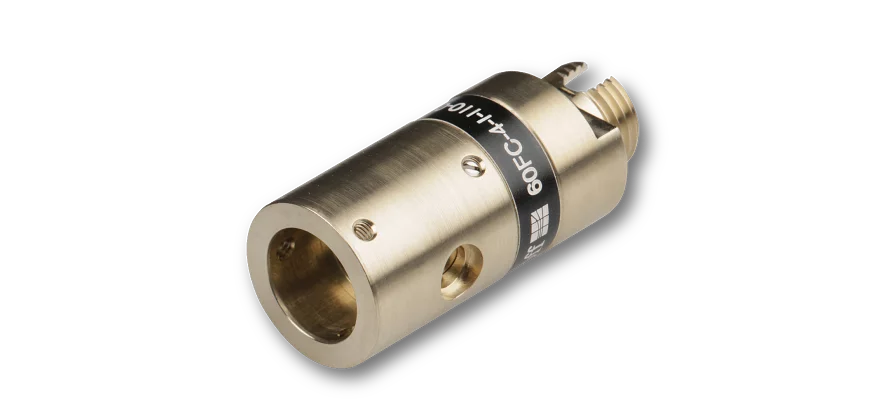The fiber cables with vacuum feed-through made by Schäfter+Kirchhoff are equipped with multimode fiber cables with core diameters Ø 50 µm - 600 µm. The feed-throughs are suitable for vacuums down to 10-7 mbar and are supplied with a small flange KF16 (DIN 28403 and ISO 2861, stainless steel). Maximum temperature range is -10 °C - 70 °C.
End-to-end fiber cable
All vacuum feed-throughs are supplied with a non-exchangable, continous, end-to-end fiber cable. That means there is no additional fiber connection (mating) at the vacuum flange.
The benefit is no additional coupling losses due to mating (especially important for small core diameters).
Multimode fiber cable
On the vacuum side, the fiber cables are equipped with Ø 900 μm buffer made of Hytrel, Nylon or Tefzel. The part of the fiber cable outside the vacuum, has a Ø 3 mm cable with Kevlar strain-relief with bend protection both at the fiber connector and the flange.
As an option the connector can be made of amagnetic Titanium (connector type FC only).
Please refer to the individual MMC fiber cable pages for all fiber options. The connector types are described in detail here.
How to order
For a specific feed-through please contact Schäfter+Kirchhoff. We additionally need information on:
- Fiber type
- Cable length inside / outside the vacuum
- Connector type inside / outside the vacuum
An example configuration can be found here.






